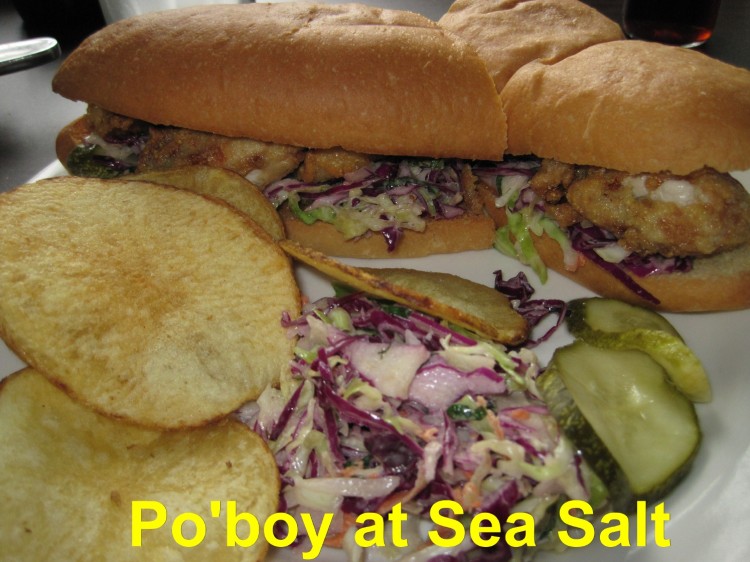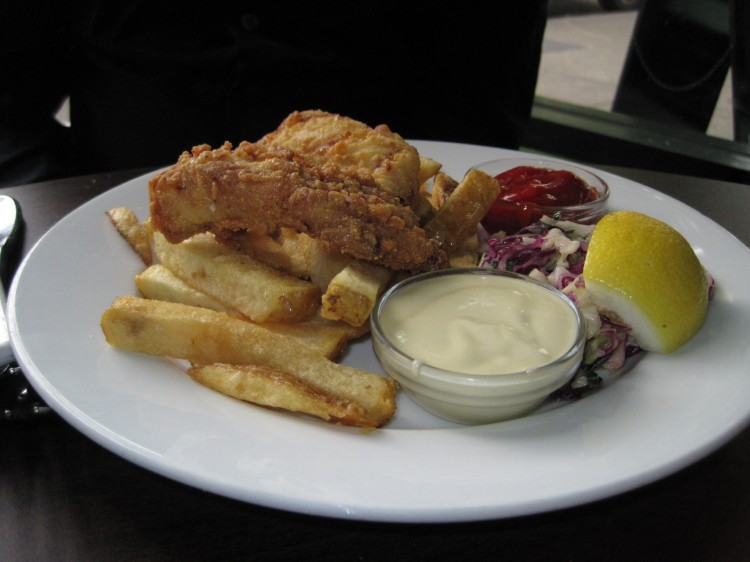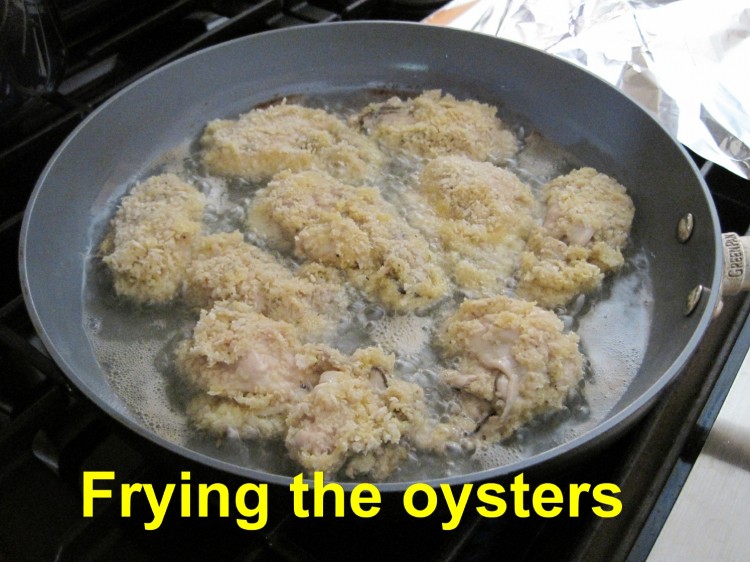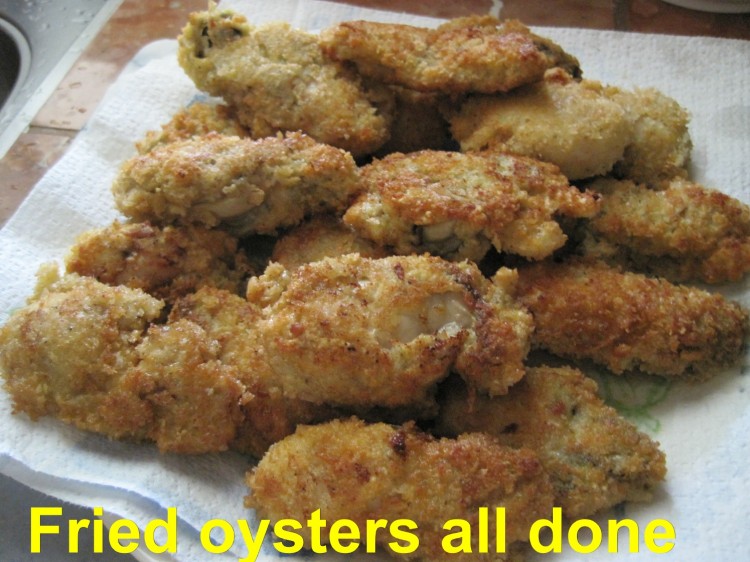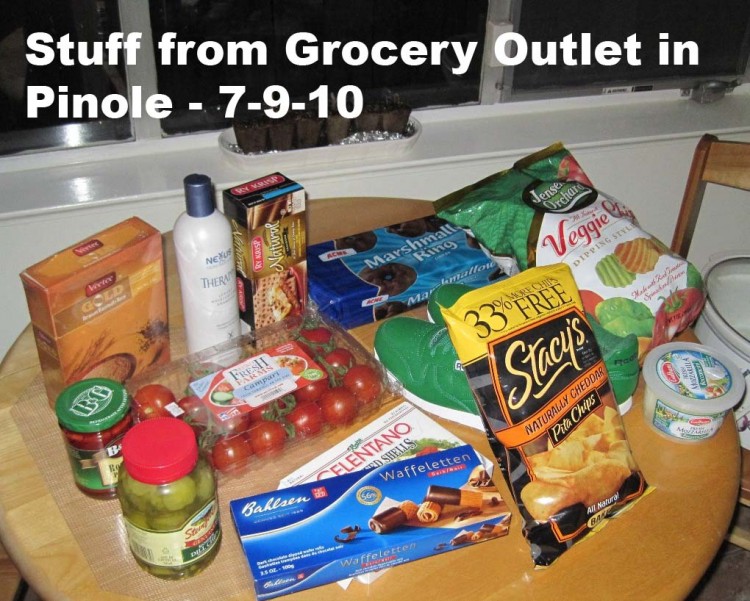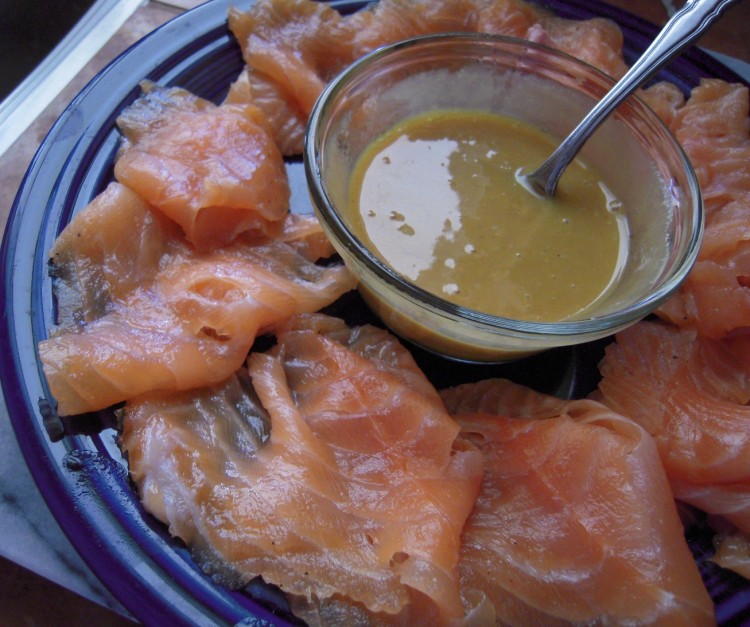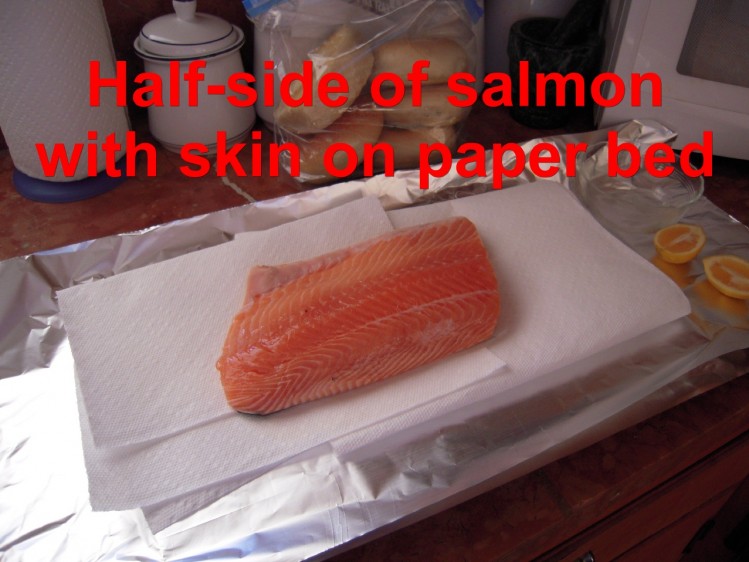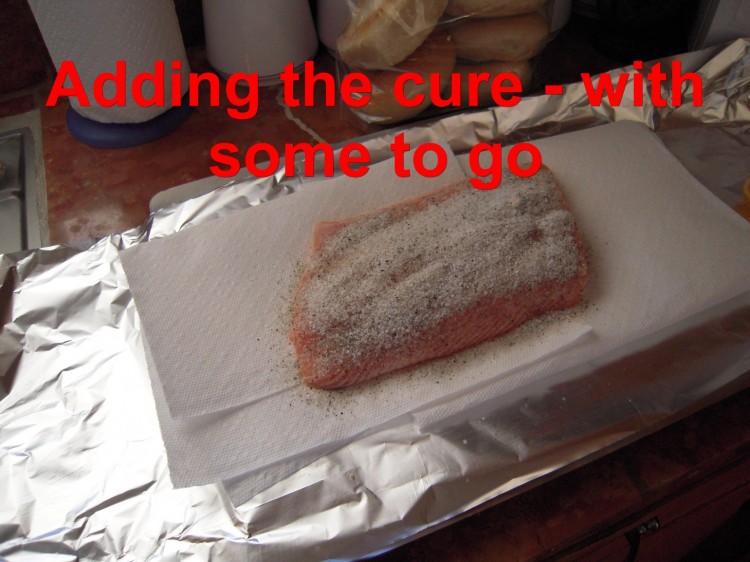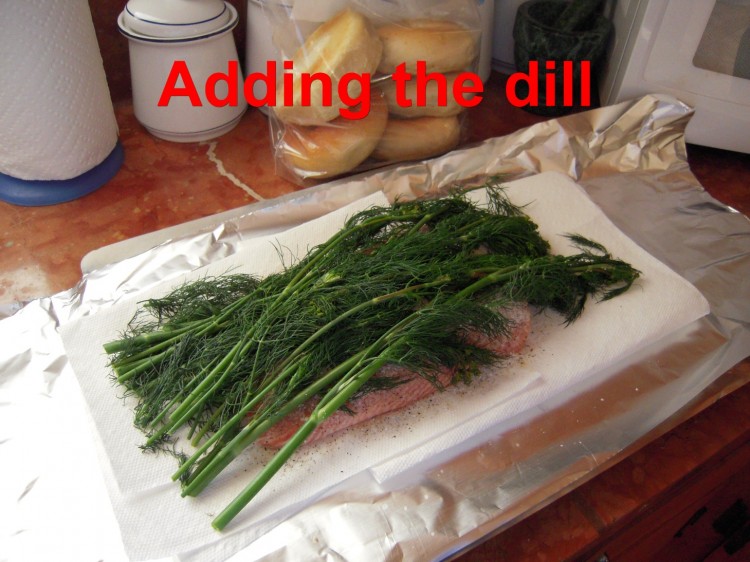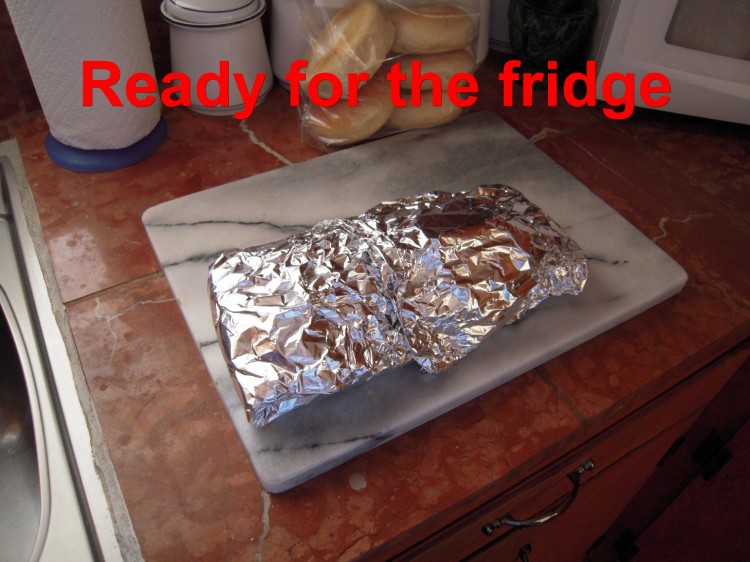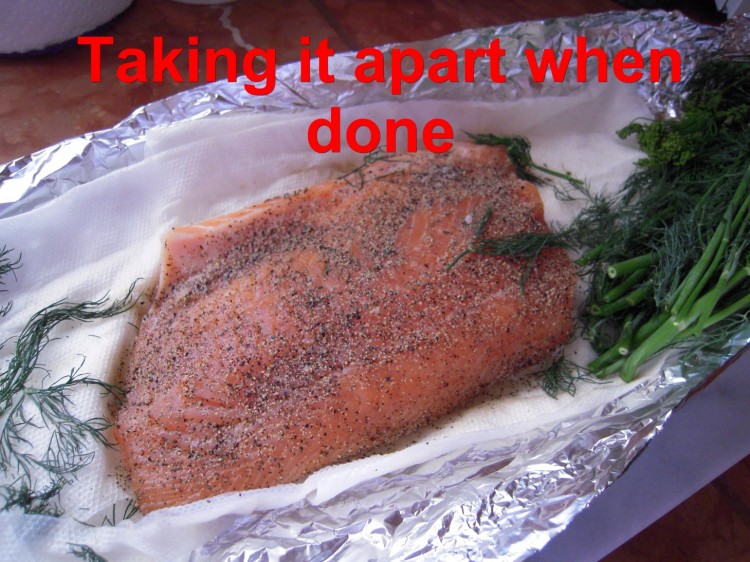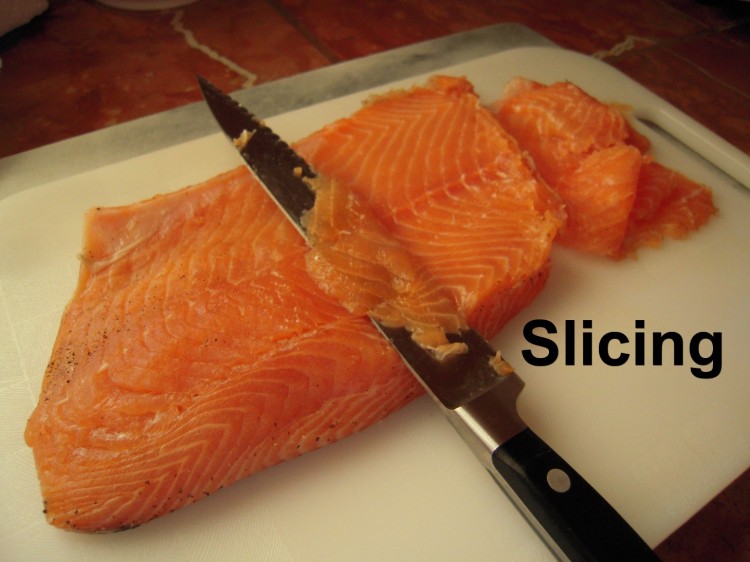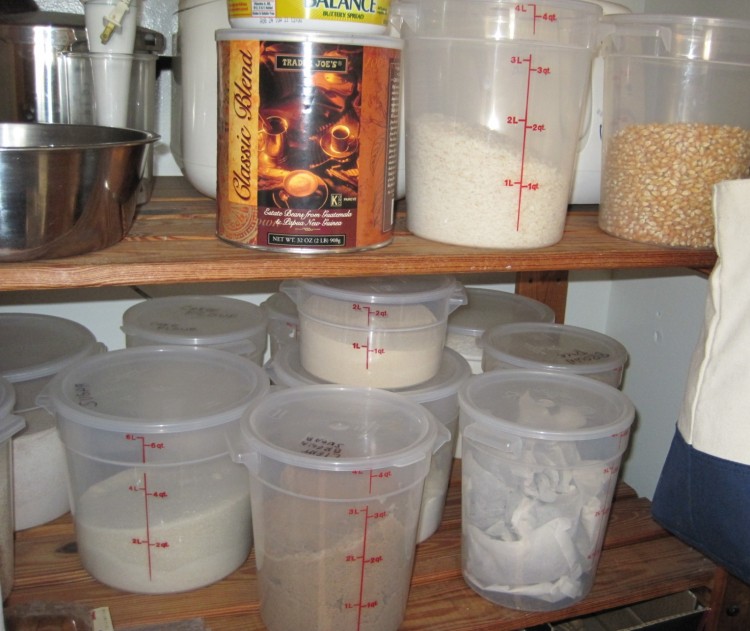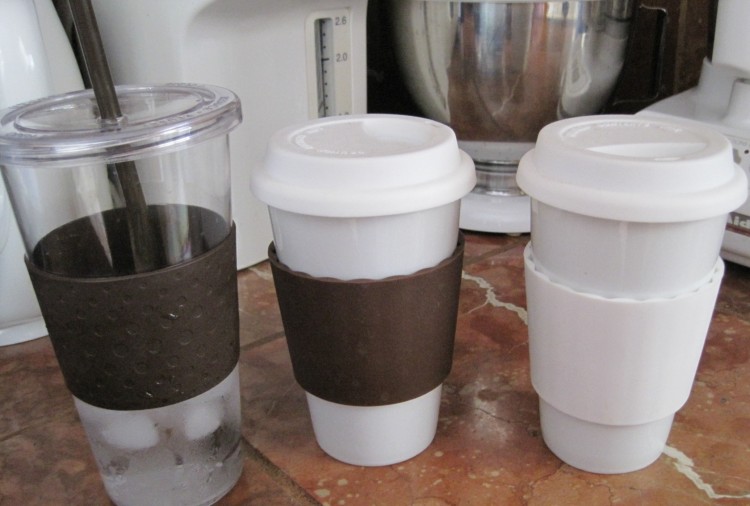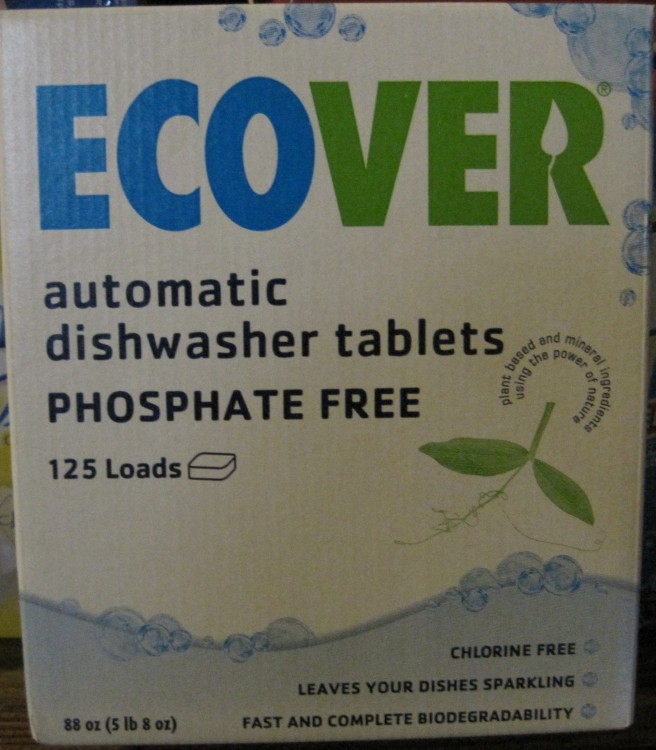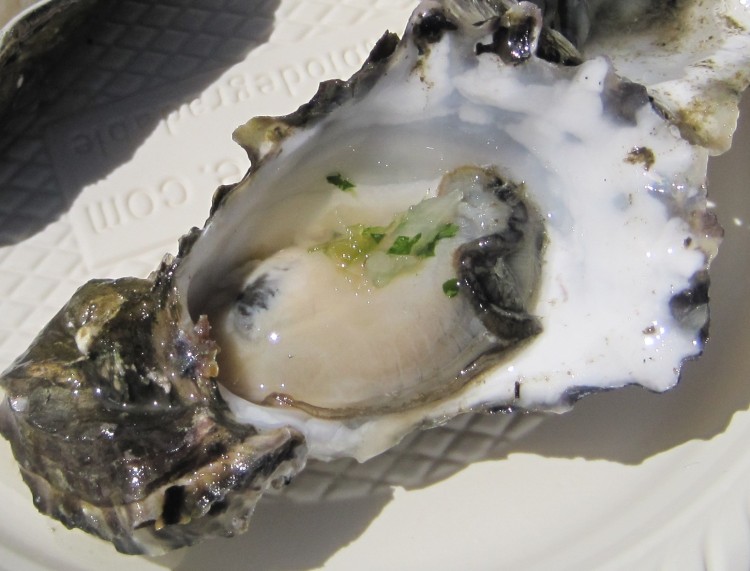 My friend, GraceAnn Walden, asked if I wanted to join her at OysterFest 2010 this past weekend, an annual event held at Waterbar in San Francisco. She was to serve as a celebrity judge for various competitions at this “celebration of the sustainable oyster,” benefiting the San Mateo Chapter of the Surfrider Foundation, an organization dedicated to the protection and enjoyment of “oceans, waves and beaches.”
My friend, GraceAnn Walden, asked if I wanted to join her at OysterFest 2010 this past weekend, an annual event held at Waterbar in San Francisco. She was to serve as a celebrity judge for various competitions at this “celebration of the sustainable oyster,” benefiting the San Mateo Chapter of the Surfrider Foundation, an organization dedicated to the protection and enjoyment of “oceans, waves and beaches.”
Being part of an event that includes me and thousands of oysters on the half shell is the stuff of dreams, so, yeah, I’m there.
So many things in life disappoint. So many things sound good on paper. I told my husband and son, “If I don’t get to eat a ton of oysters I’ll be seriously pissed.” Let’s face it, there are few things worse than being teased by a small qualtity of something you really, really love.
 This celebration delivered – and how. The sponsors were clearly generous with money, time and product. Event-goers were tagged with a pink wristband, armed with a stem glass, and turned loose on the oysters and wine.
This celebration delivered – and how. The sponsors were clearly generous with money, time and product. Event-goers were tagged with a pink wristband, armed with a stem glass, and turned loose on the oysters and wine.
Before I made my way to the oyster stalls, I took in the whole gestalt.
First off, the weather cooperated. It was breezy, sunny, and not too hot. Second, we were right on the bay with the mightly Bay Bridge almost on top of us.
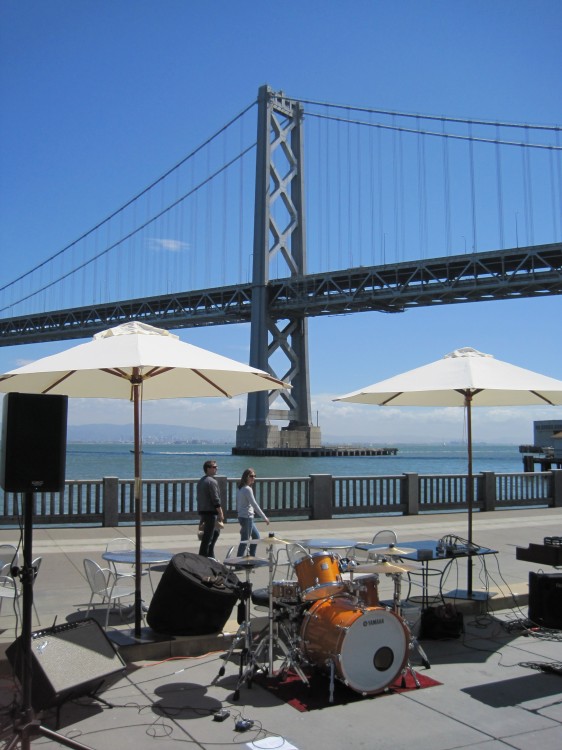 The setting was ridiculously post card, and made me think how wonderful it is to live here.
The setting was ridiculously post card, and made me think how wonderful it is to live here.
They decked out the party space nicely. If you’ve never been to Waterbar, it’s one of two Rincon Park restaurants Pat Kuleto opened a couple years back – near that Oldenburg and van Bruggen monstrosity, Cupid’s Span.
Waterbar and Epic Roasthouse, sister restaurants, one surf and the other turf, sit adjacent to each other with an attractive outdoor space between them that blends into Rincon Park and the walking path behind them.
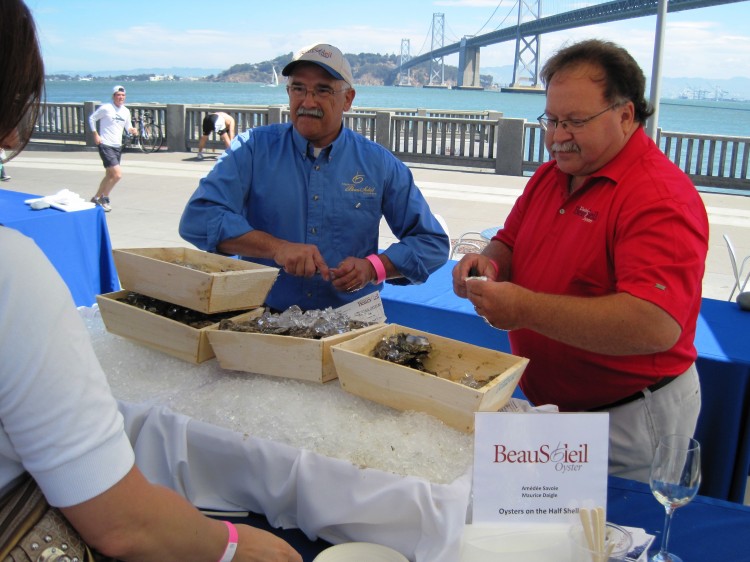 Plenty of chairs and tables were set out. Even when the crowd swelled at about the midpoint, competition for seating was not particularly fierce.
Plenty of chairs and tables were set out. Even when the crowd swelled at about the midpoint, competition for seating was not particularly fierce.
We got there right at the start, so food and drink flowed freely and there were no lines. I was very happy that the food was all oysters, all the time.
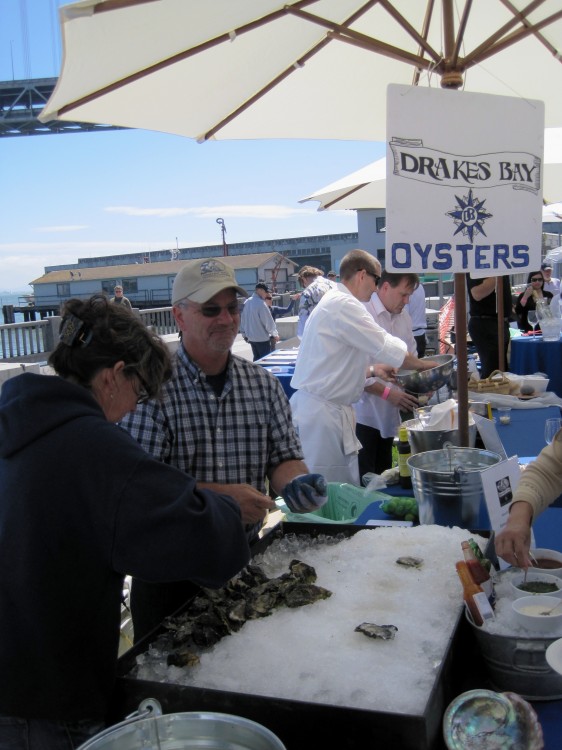 Oysters were shucked on the fly at stalls representing farmers sponsoring the event. Drakes Bay Family Farms and Maison Beausoleil – the former right here in Marin County and the latter from New Brunswick, Canada – served up God knows how many oysters. Those guys were quick, too.
Oysters were shucked on the fly at stalls representing farmers sponsoring the event. Drakes Bay Family Farms and Maison Beausoleil – the former right here in Marin County and the latter from New Brunswick, Canada – served up God knows how many oysters. Those guys were quick, too.
Nice that both Atlantic and Pacific bivalves were offered – all sustainably farmed.
You could eat as many as you wanted. The smaller Beausoleil oysters are clean, briny and a little smokey-sweet, so I had a goodly amount of those. Drakes Bay are larger and stronger in flavor – also very good – so I didn’t hold back at that stall either.
The idea was also to take five ‘sters over to the sauce station, try all five sauces, and then vote for your favorite. I have no idea which sauce won because I didn’t hear the announcement. I liked sauce 2, but usually don’t want much of anything on a good oyster.
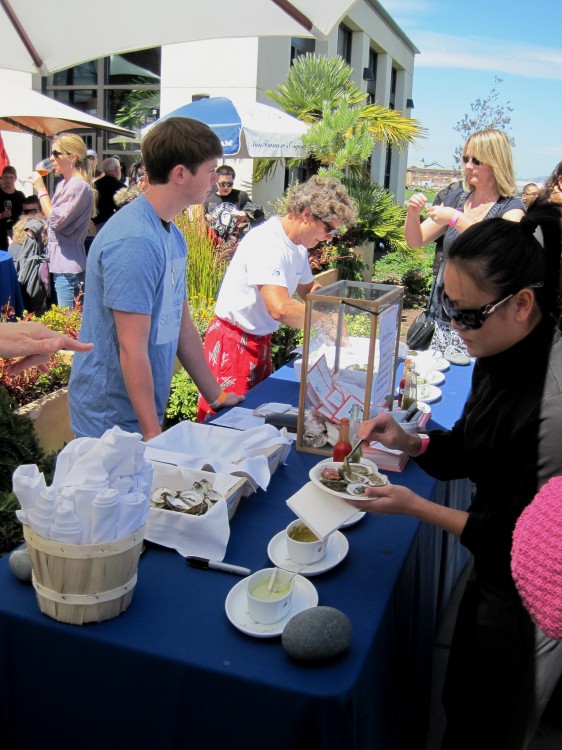 Restaurant sponsors (all Kuleto-ville, save one, Nettie’s Crab Shack [closed], unless I missed something) provided small plates starring one or more oysters – with little filler, for the most part.
Restaurant sponsors (all Kuleto-ville, save one, Nettie’s Crab Shack [closed], unless I missed something) provided small plates starring one or more oysters – with little filler, for the most part.
Epic Roasthouse put out my favorite dish of the day: a killer fried Drakes Bay oyster on a skewer with fried green tomato. This “brochette” apparently had “homemade pork belly.” Not sure how you make pork belly at home, and, if there was some on any one of the four I ate, I couldn’t detect it. I loved the remoulade-like sauce, though, and the oysters were big and fat and perfectly done. The tomato chunks were sweet and plump and coated in crisped-up cornmeal, as were the oysters. GraceAnn picked two up for me when I was holding our table, and I went back later for another two. When I was on BART riding home, I kicked myself for not getting a last one for the road. Sheer bliss.
Waterbar cranked out humongous grilled oysters with pickled cabbage in a light, buttery cream sauce. I think. If there was a card on the table I didn’t see it so I can’t swear to the sauce. I didn’t know what to make of this. It was interesting, but pickled cabbage – sauerkraut, more or less – does not play well with others. The oyster’s flavor was lost in confusion.
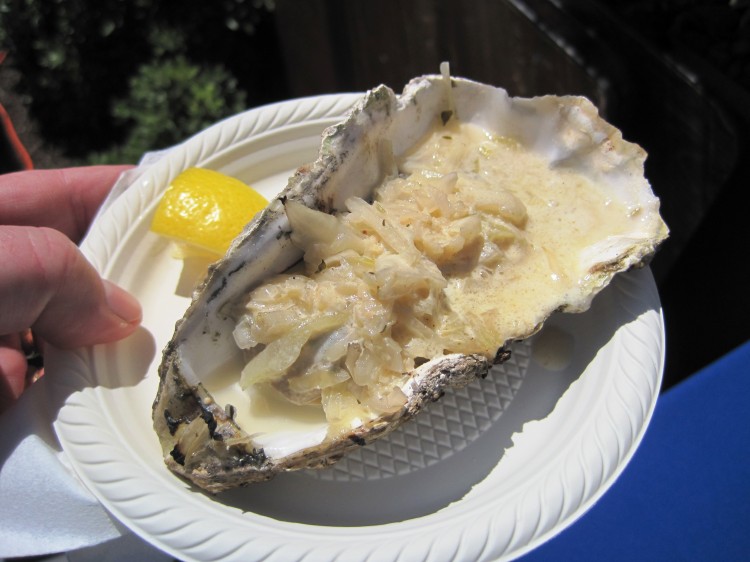 I was happy the water station was across from the Waterbar booth – and water is mainly what I drank. While there were numerous wine tasting stations, I decided to stop with the wine after my slug of Twomey 2009 Napa Valley Sauvignon Blanc. It was a drag to deal with the one wine glass I was issued while trying to eat oysters by hand as I walked around.
I was happy the water station was across from the Waterbar booth – and water is mainly what I drank. While there were numerous wine tasting stations, I decided to stop with the wine after my slug of Twomey 2009 Napa Valley Sauvignon Blanc. It was a drag to deal with the one wine glass I was issued while trying to eat oysters by hand as I walked around.
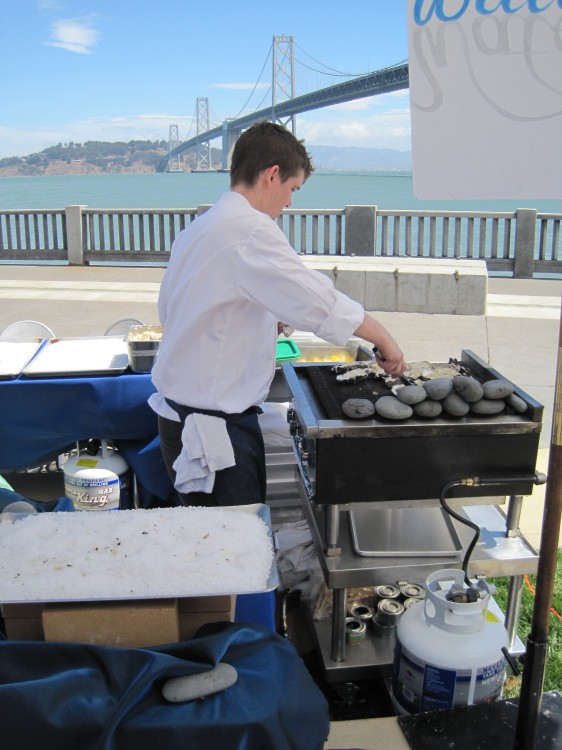 Farallon doled out Vichyssoise oyster shooters, which I believe contained both potato and leek and were finished with celery. The chef rattled the contents off to me but I was already in some sort of coma from the sun, the sea air and many oysters, so I’m not sure I grasped it all. This was a tasty little viand and a good idea for the setting. Rich, though, so I had a total of one.
Farallon doled out Vichyssoise oyster shooters, which I believe contained both potato and leek and were finished with celery. The chef rattled the contents off to me but I was already in some sort of coma from the sun, the sea air and many oysters, so I’m not sure I grasped it all. This was a tasty little viand and a good idea for the setting. Rich, though, so I had a total of one.
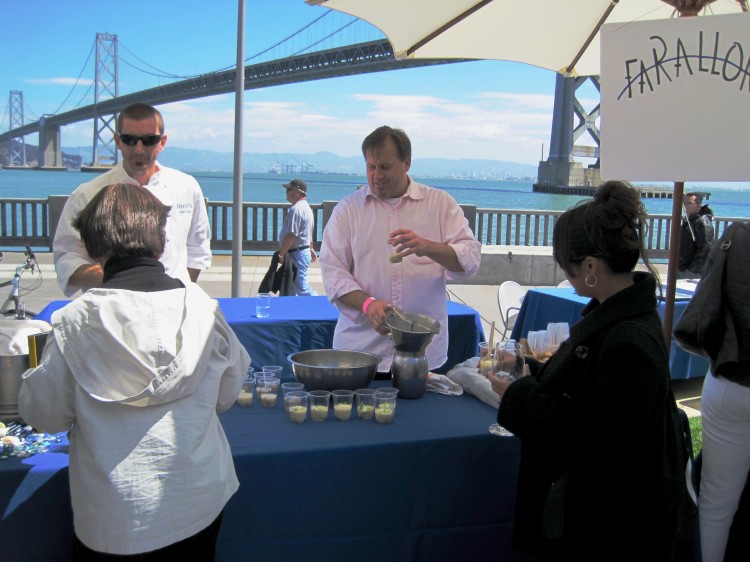 Nettie’s Crab Shack made little fried oyster po’boys with all the trimmings. The oyster on mine was not as good the one on the Epic Roasthouse brochette, but nothing to kick out of bed. I went back to try another to see if I perhaps wound up with a nonrepresentative oyster on my first sammie, but, sadly, this stall closed up shop early in the game.
Nettie’s Crab Shack made little fried oyster po’boys with all the trimmings. The oyster on mine was not as good the one on the Epic Roasthouse brochette, but nothing to kick out of bed. I went back to try another to see if I perhaps wound up with a nonrepresentative oyster on my first sammie, but, sadly, this stall closed up shop early in the game.
In between grazing and hanging out in the sun drinking beer, GraceAnn served as a celebrity judge for the oyster eating and shucking contests.
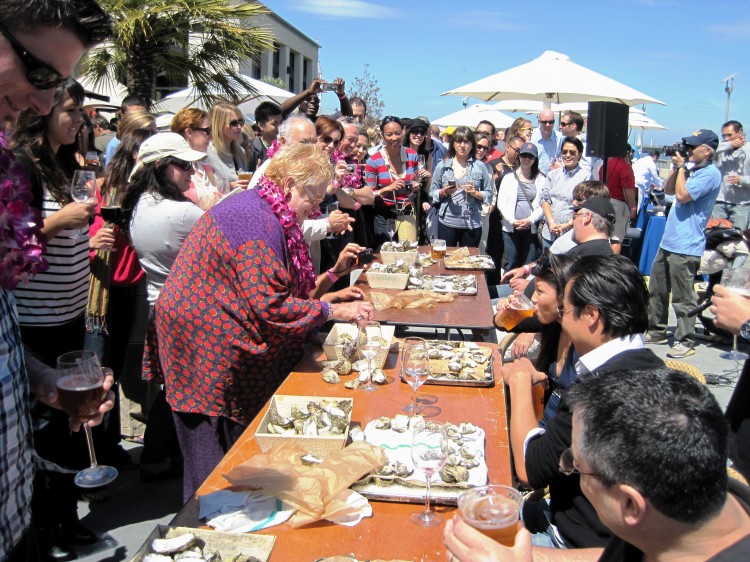 Eating contests are always a wonder to me. I don’t really get them, but I must be in the minority. Here there were five people who ate oysters as fast as they could for three minutes. Each of the five celebrity judges tracked one participant. GraceAnn wound up tracking a young woman who entered the contest at the last minute, egged on by the crowd when an empty space at the table was offered up at high volume by the MC. The winner ate over 80 oysters, with the middle ground being in the 40-something range. Most memorable to me was GraceAnn encouraging her contestant by shouting, “Don’t chew, just swallow!” Indeed.
Eating contests are always a wonder to me. I don’t really get them, but I must be in the minority. Here there were five people who ate oysters as fast as they could for three minutes. Each of the five celebrity judges tracked one participant. GraceAnn wound up tracking a young woman who entered the contest at the last minute, egged on by the crowd when an empty space at the table was offered up at high volume by the MC. The winner ate over 80 oysters, with the middle ground being in the 40-something range. Most memorable to me was GraceAnn encouraging her contestant by shouting, “Don’t chew, just swallow!” Indeed.
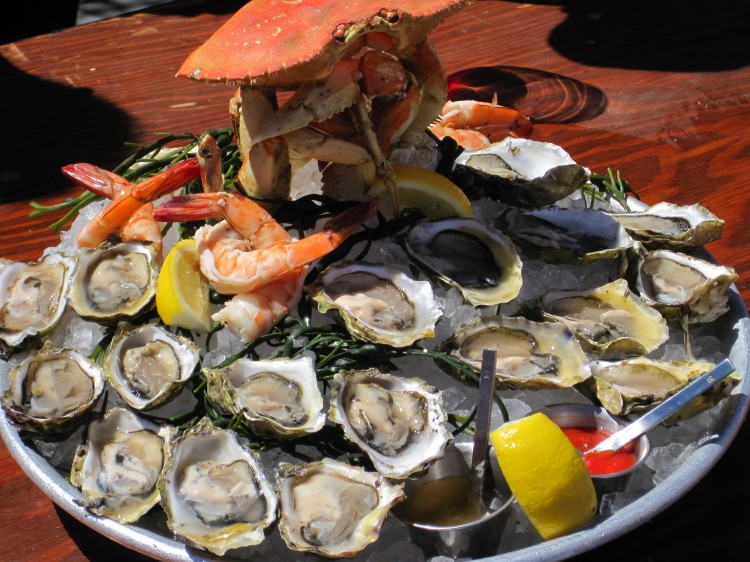 The oyster shucking contest included shucking and arranging said oysters on a platter with other seafood under duress. The platters, judged not only by aesthetic appeal but also practical concerns – like ease of getting at crabmeat and shrimp – were sold to the highest bidders at the end of the competition. There were four contestants: three chefs from sponsoring restaurants and one amateur. The amateur won.
The oyster shucking contest included shucking and arranging said oysters on a platter with other seafood under duress. The platters, judged not only by aesthetic appeal but also practical concerns – like ease of getting at crabmeat and shrimp – were sold to the highest bidders at the end of the competition. There were four contestants: three chefs from sponsoring restaurants and one amateur. The amateur won.
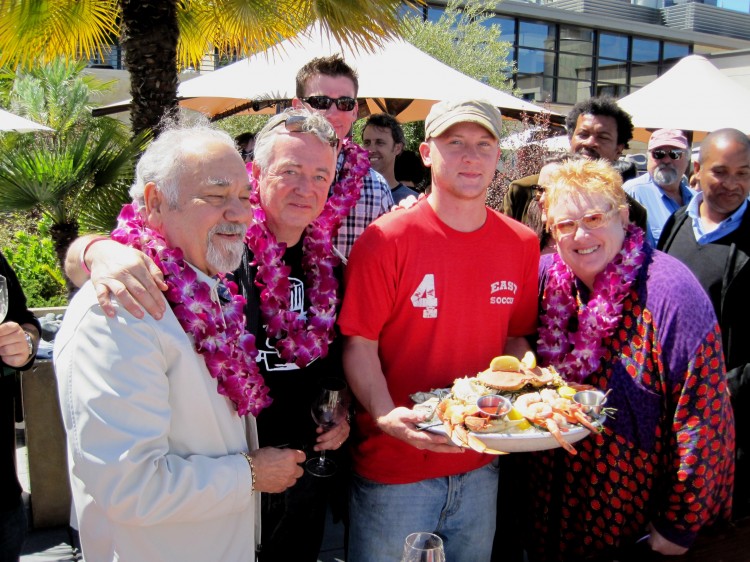
The winner of the oyster shucking contest, Greg Babinecz, at OysterFest 2010 in San Francisco with celebrity judges
Judges Roland Passot, Narsai David, two Alice DJs, Matty and Icky, and GraceAnn conferred for quite some time before making a decision, and the winner was thrilled.

Celebrity judges conferring at OysterFest 2010
The supportive and cheering crowd gathered close around the long tables used for the contest, so it was a blast.
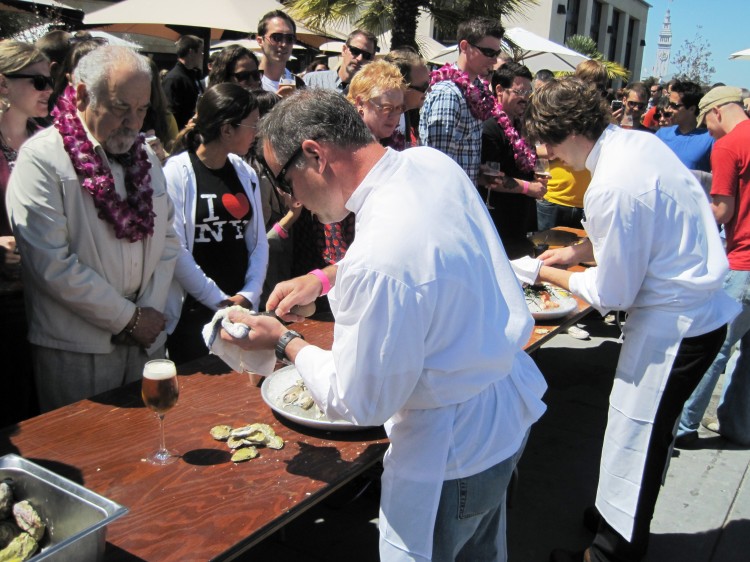
Shucking contest in action at OysterFest 2010 in San Francisco
I could have done without the surf music. The band, Drifting Sand, was good, but I experience even good surf music like a mild toothache: I just want it to stop.
ChicoBag’s “Bag Monster” wandered around the event. He’s a guy wearing a suit of 500 supermarket plastic bags, reminding us how many of these blasted single-use things the average American uses in a year, and that they wind up everywhere they shouldn’t – like shorelines.
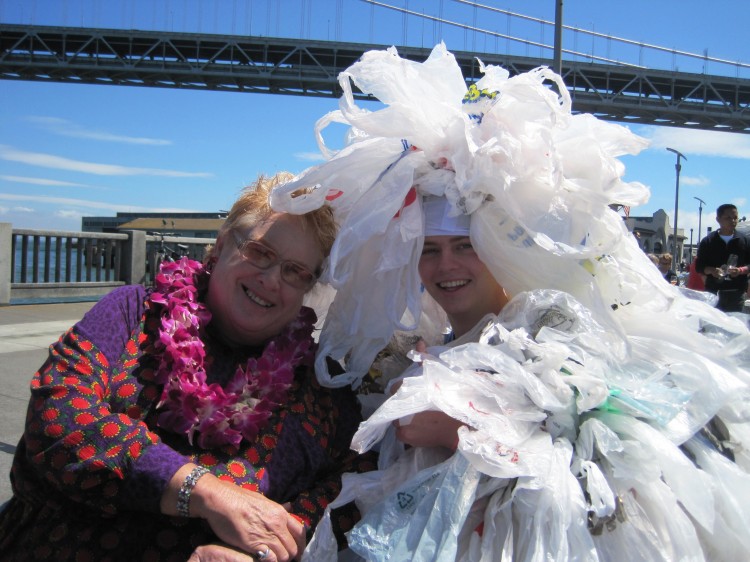
Bag Monster and GraceAnn Walden at OysterFest 2010 in San Francisco
GraceAnn and I left shortly before the event ended and were both in need of a nap. We wondered if there was something about oysters that makes a person sleepy.
Like lemon juice in a wound, I had to stand all the way to the East Bay on BART, and then flung myself on the bed when I got home. Steve, my husband, channeling his Mother, said it was “the salt air and the sun.” Matthew, my son, not even looking up from whatever video game he was playing, told me he had “no intention of feeling sorry for someone who just got to eat alot of oysters for free at a fancy restaurant on the water.”
The final word: If you are an oyster-on-the-half-shell kind of person, you should run to this event in 2011. Not only will you satisfy a yen to an unprecedented degree, you’ll help a worthy organization. Just arrive early to avoid the lines, and drink more wine and beer than I did!

